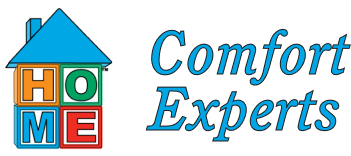In The Muppet Movie, Kermit the Frog sang “It’s Not That Easy Being Green”, but actually, with all the new environmentally friendly products on the market today, it’s really not that hard anymore. Thanks to technology, a higher consumer awareness, and our government’s dedication to cleaning up the environment, new heating and cooling products exist that make our lives better while simultaneously helping the environment.
High-Efficiency Furnaces
The AFUE (Annual Fuel Utilization Efficiency) is a unit that determines the percentage of fuel turned into heat, and the amount of gas that has been exhausted through the flue. This is the unit of measurement used by the industry to determine energy efficiency. Older furnace models made in the 1970s will typically have a rating of 65% efficiency. Today’s furnaces must have a rating of at least 78%, but some have a rating of 90 – 98% AFUE, meaning that 90-98% of the fuel is utilized, while only 5 – 10% is exhaust. The higher the AFUE, the higher the efficiency of the furnace. High-efficiency furnaces do cost more initially, but the savings is usually recouped in energy savings if you stay in your home for five to 10 years. Going from a traditional furnace to a high-efficiency furnace (90% plus) should save you between 25% and 30% of your current heating costs.
High-Efficiency Air Conditioners
High-efficiency air conditioners make cooling your home more energy efficient as well. Energy Star qualified central air conditioners have higher seasonal energy efficiency ratio (SEER) and energy efficiency ratio (EER) ratings, which makes them about 14% more efficient than standard models. The Energy Star website says that if your air conditioner is more than 12 years old, replacing it with an Energy Star qualified model could reduce your cooling costs by 30%. Plus, the refrigerant R-22 (commonly known as Freon) has been banned from production by the government and replaced with more environmentally friendly refrigerants. Newer air conditioners are designed to use the new, eco-friendly refrigerant.
Programmable Thermostats
These little gems are a super easy way to save money on your air conditioning and heating bills on top of the savings you’ll see with more efficient furnaces and air conditioners. They make controlling your home’s temperature easy and convenient and also reduce energy consumption which is good for the environment. According to the Energy Star website, you can save about $180 a year by properly setting your programmable thermostat and maintaining those settings.
Save Energy and Money
Imagine reducing your South Bend heating and cooling bills by 25%-30%. That would mean energy savings year round. While the initial cost of these high-efficiency systems is higher than lower efficiency models, you can get that money back in lower heating and air conditioning bills every month after for as long as you live in your home. It’s nice to know you can save some green while you’re being green. For more information on high-efficiency furnaces and air conditioners, give us a call. One of our Home Comfort Experts technicians can help you learn more.
At first glance, there doesn’t seem to be any correlation between energy efficiency in your home and your health. However, indoor air quality may suffer due to the “tighter” homes of today. We take a lot of actions to make our homes energy efficient. Sealing and caulking around doors and windows, triple pane glass, and additional insulation all keep the outside air out, but unfortunately, it also keeps the inside air in. Homes require a mixture of indoor and outdoor air to control pollutant levels. When minimal amounts of outdoor air enter a home, pollutant levels inside can build to dangerous levels. In fact, the EPA (Environmental Protection Agency) warns that the levels of hazardous pollutants in indoor air have been found to be up to 60 times greater than those found in outdoor air.
Besides the fact that the air is not being replaced, we add pollutants to our indoor air every day. Pollen, dander, mold, cigarette & cigar smoke, paints, stains, cleaners, pesticides, etc. And don’t forget about the stove, heaters and fireplaces. Even household items that seem harmless release lots of chemicals into our homes-new carpet, flooring adhesives, furniture-especially pressed wood that releases formaldehyde. We are surrounded by stale, polluted air. And since we spend 90% of our time indoors, that means we are breathing this air almost constantly.
So what can you do to lower the level of pollution in your Mishawaka home? Luckily, there are actions you can take to improve the air quality in your home. Air cleaners can remove many of the foreign particles. They come in several different varieties that work in slightly different ways – media cleaners, electronic cleaners, and electrostatic cleaners all make your air more healthy. HEPA filters can help remove pollutants as well. The best can remove particles as small as 0.3 microns or the width of a human hair. Ultra violet lights and duct cleaning can remove dust, mold, mildew, and bacteria. You are not powerless when it comes to improving the air in your home. If you’re not sure which option is best for you, check out our Indoor Air Quality page. Feel free to call and speak to one of our comfort advisors who can help you figure out what’s best for your home.



